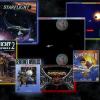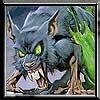I think 15 goodstypes is enough,
It's too many in my opinion.
If you have 15 goods and your economy was stationary, meaning that there are places where one good always trades well, then the player will need to remember 15 locations where each one of the goods trade well.
If your economy adapts to seasons and trade then you would have to remember: 15* 4 * amount of conditions* trade points, to understand what can trade where.
Space Rangers 1 had this problem. So what players did was bought cargo, traveled with it from planet to planet and traded it whenever they could make a profit as shown by the indicators; it made trading the worst possible way of financing a war.
Space Rangers 2 fixed it bay reducing the economy changes, allowing players to search the nearest planet that trades in a product.
Each race had improved demand for a type of product, so if you went from human(Sold alcohol low and some times drugs) to a Peleng sector(Buys alcohol and drugs) you had a known means of making money.
Also trade centers where introduced that allowed players to shift the economy and these centers often had demand for expensive trade goods.
Also the effect of enemies in the sector had a larger impact on trade, making dangerous planets more profitable, even allowing players to starve planets as pirates or using a artifact that called enemies.
To the developers it looked like the first game's economy was perfect, what they forgot was that players see it from the other end. For a player to learn how trade worked each season they would have to take notes for two or more game years, considering that you can win the game in five years this clearly doesn't work.
The worst part was that starving planets was in the first game. No one noticed because no one had food or medical goods when entering a attacked sector, why would you even fill your limited hull with products that often only made 1cr-4cr profit each when you could only carry 50-200 at max( a gun sold for over 1000cr and was often at 25-50 in weight).
Because large amounts of trade goods makes it harder to trade most games stick with either 4 or 8, the ones that have eight also allows the player to use some goods.
Pirates of the caribbean is a game that has a lot of trade goods. They made it easy on players with four major trade points, each always buying 3 or more goods at a high price.
This game shows what happens when you allow trade goods to be used, most players stock wood and cloth for repairs while most players never even realize that cannon balls are also a trade good.










